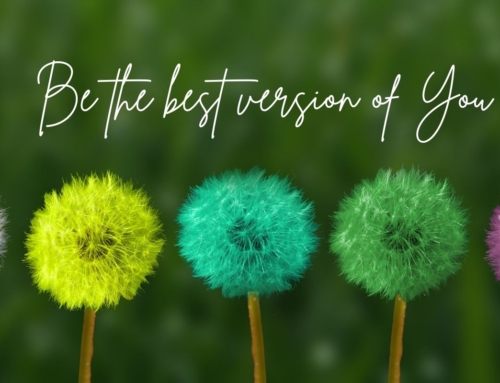How do you know if you are progressing in your yoga practice?
It could be that you finally got your heels on the ground in down dog. Your plank is stronger. Your now standing on your head, you see the students behind you when you twist… but physical successes will only take you so far. What happens when you notice the person beside you is doing ‘better’ than you? or your more anxious after a class? or you’ve hurt your wrist or knee aches. Your exhausted from pushing to hard. And why are you pushing so hard, isn’t yoga meant to be relaxing? why is life still stressing you out?
The Yamas and Niyamas
The 5 Yamas or ethical disciplines.
Using positive intention to reduce guilt. Truth, discipline, and morality are inner qualities that when cultivated within a clear framework, bring a sense of peace and well being, from knowing we live a life of integrity and no-harm.
1. Ahimsa (non-harming or non-violence):
The opportunity to let go of hostility and irritability and instead make space within your consciousness for peace. The more you do this for yourself allows you to let others be who they are, and to relate to the world in a whole new way. To look at all the attitudes you have that might be keeping you from feeling at peace. A peacefulness prepared to meet all needs with loving openness. To meet each situation in an open and accepting way not only allows you to experience less suffering, but the other Yamas (and your yoga practice) will also unfold effortlessly.
Click here to see how words affect us; the research by Doctor Emoto shows photos of water being changed by Negative and Positive words. The human adult body is up to 60% water, of which the brain and heart are composed of 73% water. Makes you want to add daily positive thinking to your workout.
The neuroscience of gratitude; even if you aren’t able to think of anything to be grateful for, simply asking yourself the question is powerful enough to change your brain chemistry. But the reality is there is ALWAYS something you can be grateful for.
2. Satya (truthfulness):
Truth is amongst the highest of ideal. Be careful not to confuse your point of view with the truth. You must have integrity and humility to realize that the truth may be bigger than you. Asking yourself: Am I speaking the truth? Or Am I just giving my opinion, filtered through my mind and all my prejudices?
Satya requires that you consider both the spoken and unspoken aspects of your words. You do not have to say everything that’s on your mind—especially if it’s hurtful. Don’t gossip, even if the information you’re giving is true. Instead, speak only of the highest. Use your words to elevate the listener, when you do so, you elevate yourself in the process. Many yoga students find that spending time in silence helps them notice the distinction between opinions and reality. Slowing down your internal chatter can help ground you in Satya. In silence, you can examine the roots of speech on an inner level, which enables you to better control your outward communication. You then establish a way of interacting with the world that includes both Ahimsa and Satya, both peacefulness and truthfulness.
Practising truthfulness is a skill; Truth is the foundation for a fair and just society.
3. Asteya (non-stealing);
Do not steal and all good things will come to you. Because Asteya is commonly translated to mean refraining from taking anything that is not freely offered. The first things most people think of our money, clothes, food, and other tangible stuff. But there is more to Asteya than material possessions. There are lots of things you can steal, someone’s time if you are late. You can steal someone’s energy. You can steal someone’s happiness. You can steal someone else’s ideas if you represent them as your own.
Asteya calls to focus on how and what you consume. If you are taking something, you need to consider how to give back the appropriate energy or amount taken. Yogic texts see everything is interconnected, whatever you receive is taken from somewhere else. Most people don’t stop to consider all the different hands or levels of energy involved in all they are consuming. Think of the food you eat, how much you pay for it to balance the time and energy involved to bring it to you. Major imbalances occur if you take more then you give. To invite Asteya into your life, consider what you truly need and refrain from letting your desires persuade you to take more. Think of fair trade, not only in your shopping habits but also in all your day-to-day interactions. Respect the time and energy of others, give credit where credit is due, and see if you can help build up the world’s kindness reserves by giving more than you take.
4. Brahmacharya: Right use of energy, or energy moderation:
It’s about preventing the dissipation or leaking out one’s energy through the misuse of the senses. It’s a personal energy-conservation program. When you practice Brahmacharya, you are not letting your senses rule your behaviour. You think before you react.
Anything that causes turbulence in the mind stirs your emotions and seen as a violation of Brahmacharya: overstimulating foods, loud music, violent movies, and even, inappropriate sexual behaviour. Whatever disturbs your mind and body disturbs your level of energy. When you get angry or worried, have you noticed how tired you feel afterward? Therefore, Brahmacharya asks you to consider how you spend it. Look at energy like money in the bank: If you have $100, you don’t want to spend it all right away so that you have nothing left. Become a good energy manager
When you’re working with your yoga postures (asana), you need to learn to regulate your effort so that you’re not pushing and forcing, which drains your energy (medicinal effects rather poisonous). Give what you have to give truthfully (Asteya) so your yoga postures can be replenishing your energy, not draining it. We then learn how to let go of excessive tension and relax into the moment. The more at ease you are the happier you’ll be in all moments.
5. Aparigraha: Non-grasping
This can be a tough sell in our consumer culture, but freedom from wanting more and more is just that: freedom.
Aparigraha is the decision to not hoard or accumulate goods through the need to ‘must have’. Before you bring anything into your home, ask yourself: Do I ‘need’ this? Or am I just accumulating stuff because it’s a bargain, or out of fear of missing out, or trying to keep up? Considering these questions will stop your possessions from taking over your need to feel content or happy.
The more stuff you have the more you have to take care of or defend it. You start to get attached and identify with it. It’s easy to start thinking you are your stuff, or your stuff make who you want to be. The truth is that stuff comes and goes. Aparigraha asks you to just let it go. If your home is filled with old junk that doesn’t apply to you anymore, then there will be no room for new energy to come in. You can’t pick up new things when your hands are full. This holds true for the non-material ideas and attitudes you cling to as well. If you are hanging on to old beliefs about yourself or your relationships or cling to a career that no longer feeds you, there’s no freedom to move in a different direction. To acknowledge abundance and practice gratitude means you don’t need more and more. You become grateful and feel fulfilled with what you have and who you are at this moment.

The 5 Niyamas are moral codes or social contracts which guide us towards positive behaviour.
Morality can be a body of standards or principles derived from a code of conduct from a particular philosophy, religion or culture, or it can be derived from a standard that a person believes should be universal. Morality may also be specifically synonymous with “goodness” or “rightness”.
1. Saucha: Purity
Involves keeping things clean, inside and out. Both physical and mental hygiene. You want to keep your thoughts uncluttered so you can feel free from afflictive emotions; you keep your body and environment in order to create a sense of calm. A mind trained by meditation has more orderliness. Physical orderliness can also affect the mind. Ridding of clutter, scrub floors, simplify your life, all these are expressions of Saucha.
When you work at purifying your body, you begin to understand that it will never be perfectly clean. Patanjali says to look more deeply at what the body is: The more you clean it, the more you realize that it is an impermanent, decaying thing. Saucha helps break up excessive fixation with your body, or the bodies of others. When you learn to not identify with the body, you can get in touch with your essence. The part of you that’s pure and free from aging, disease, and decay. When you understand your true undying nature, it’s easier to stop striving for physical perfection and instead rest in joyful awareness.
2. Santosha: Contentment
Interpreted as the greatest happiness, the underlying joy that cannot be shaken by life’s tough moments, by injustice, hardship or bad luck. Contentment is about accepting life as it is and less about needing to creating perfection. Life throws all sorts of things at you, most of which you have little control. Sometimes it’s dealing with the cards you get.
Contentment in your yoga practice is acknowledging the tendency to strive for a perfect pose. We instead look to accept what you are doing right now is 100% for you and that is perfect for you at this moment. There are no guarantees you’ll be happier when you can touch your toes, hold a handstand or have more money. The wealthiest people in the world can be emotionally unhappy. The process of Santosha is relaxing into where you are right now and seeing the beauty. You can’t run after contentment it finds you. But you do have to create a space for it to reside. Santosha allows your mind to find more ease. It’s not to say you can’t change your reality, but to let go of the war with reality. When you do, you’ll be able to think more clearly and be more effective in making better decisions.
If you don’t feel content, just act for a moment as if you were. This will kick-start a positive feedback loop, which with practice will generate real contentment. It might feel absurd at first but the simple physical act of turning up the corners of your mouth can have amazing ripple effects. A Smile can change everything. Practicing smiling is like planting seeds of a mighty redwood. The body receives the smile, and contentment grows. Before you know it, you’re smiling all the time. Whether you’re doing your yoga practice or living life, remember to find joy in the experience.
A popular TED talk by Amy Cuddy with her research on adopting a power stance for a few minutes can shape how we feel and who we are.
You may like to look more closely at Psychosomatics, it is a whole medicine based on physical illness caused by mental or emotional problems.
3. Tapas: Right Effort
Tapas is translated as “self-discipline,” “effort,” or “internal fire”. The Yoga Sutra suggests that when tapas is in action, the heat it generates will both burn away impurities and kindle the sparks of divinity within.
Tapas is the willingness to do the work, which means developing discipline, enthusiasm, and a burning desire to act and to learn. You can apply tapas to anything you want to see happen in your life: playing an instrument, changing your diet, cultivating an attitude of loving-kindness, contentment, or non-judgment. In yoga, it’s often seen as a commitment to the practice. You figure out what you can do, and do it every day. Even if it’s only 10 minutes you make that time important, because it has become too valuable to not do.
Connect to your own determination and will. Holding a yoga pose longer then you think you can is tapas. You are restraining yourself from moving and are watching what happens. In this way, you build the capacity to tolerate being with a strong sensation. You will get to answer the question: What is my real limit? And you develop the skill of witnessing, which is one of the most important skills of yoga.
The effort you use when you engage tapas is directed toward cultivating healthful habits and breaking unhealthful ones. If you become obsessive or addictive by doing too much, then your tapas is to stop or to do less. Tapas helps you to cease doing anything mindlessly like an ingrained habit. When you use your will to overcome your conditioning, you free yourself from the many unconscious actions that cause suffering. This makes discipline a path to happiness.
Read a book ‘Big Magic” Elisabeth Gilbert – finding the right effort to create, whether it be the art of a happier life. (Big Magic Book and Audio Lessons)
4. Svadhyaya: Self-Study
Happiness is our nature, and it is not wrong to desire it. Just don’t get focused on seeking it outside of yourself when it is actually inside. To tap into this wellspring of happiness that lies within each of us is by dedicating yourself to the art of self-study, of looking within and asking the eternal question: Who am I?
The Yoga Sutra suggests that the study of the Self leads you toward communion with the Divine. It’s a lofty aim, but developing Svadhyaya is first of who you are: your functions, habits, what stirs your emotions etc. Knowing yourself is the most fruitful practice. What makes you tick? Are you on time and orderly? Or are you sloppy and late? What makes you mad or happy? How do you feel about that person next to you?
Develop the capacity to find the answers without judgment, criticism or vanity. Svadhyaya is a skillful investigation. When you practice self-observation, you begin to uncover. This information allows you to then address the unconscious patterns governing your life. When you notice, but not judge, what you are doing, and how you are feeling in every moment, you open a window of empathy towards yourself. You then gain the stability to extend this same empathy towards others.
Study of sacred texts, such as the Yoga Sutra, the Bhagavad Gita, Buddhism’s Heart Sutra, or the number of inspirational books on offer is where you gain wisdom and perspective that things are so much greater than yourself. When you read reputable texts, you’ll read something that resonates, and so begin the understanding that all beings experience these things. This is where wisdom develops, the knowledge that helps you understand the bigger picture of life’s experiences. This increases your compassion for yourself and others.
5. Ishvara Pranidhana: Dedication to the Highest
A few disputes that the last of the Niyamas is the pinnacle of spiritual practice. In the Yoga Sutra it says that ‘liberation—the highest happiness—comes only from a love of, communion with, and surrender to, God’ (or as I look at it, something greater than yourself).
won’t need to think about not hurting anyone or not lying or stealing. If you dedicate your heart to loving and serving something greater, all other things fall into place.
‘Practice with Patience and Persistence and all will be forthcoming’. I learned this from my martial arts days. These 3 P’s still to this day keeps me moving forward by developing mental strength to combat feelings of giving up.
‘Less is More’; do something little even when you feel like doing nothing. This is where the big changes take place from the little steps you can take. This is where the Joint Rotations are like a default routine; simple exercises that are cleverly designed to increase energy and get you back in a better enthusiastic mood.
To embrace Ishvara Pranidhana, it helps to understand you don’t have to believe in a representation of God or a religion to accept that there is a powerful, unexplained energy supporting life in this universe. Everything has a power source; our bodies need food, oxygen, and water. The sun has fusion. Electricity comes from sources like coal, natural gases, nuclear and many more. The driving force behind all these things is made up of atoms. The questions Yogis and scientist ask is what fuel source, fuels the atom?
So Ishvara Pranidhana is offering oneself to this higher power which is there for all of us. Patanjali says ‘pause to look for the higher essence in any situation’. Ishvara Pranidhana emphasizes devotion, service, offering to the greater good, bring more beauty and love into the world. If you do that, you won’t need to think about not hurting anyone or not lying or stealing. If you dedicate your heart to loving and serving something greater, all other things fall into place.







